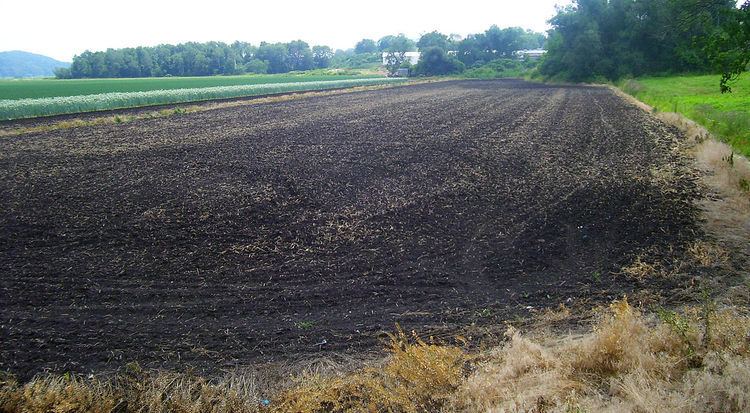Used in WRB, other Profile AhBC Climate Humid continental | WRB code CH Parent material Loess | |
 | ||
Chernozem (from Russian: чернозём, chernozyom; [tɕɪrnɐˈzʲɵm], translated as "black soil, dirt or earth") is a black-coloured soil containing a high percentage of humus (7% to 15%), and high percentages of phosphoric acids, phosphorus and ammonia. Chernozem is very fertile and produces a high agricultural yield.
Contents
Distribution
There are two "chernozem belts" in the world: the Eurasian steppe which extends from eastern Croatia (Slavonia), along the Danube (northern Serbia, northern Bulgaria (Danubian Plain), southern Romania (Wallachian Plain) and Moldova) to northeast Ukraine across the Black Earth Region and southern Russia into Siberia, and the other from the Canadian Prairies in Manitoba through the Great Plains of the United States as far south as Kansas. Similar soil types occur in Texas and Hungary. Chernozem layer thickness may vary widely, from several inches up to 60 inches (1.5 metres) in Ukraine.
The terrain can also be found in small quantities elsewhere (for example, on 1% of Poland). It also exists in Northeast China, near Harbin. The only true chernozem in Australia is located around Nimmitabel producing some of the richest soils in the nation.
The sale of agricultural land has been illegal in Ukraine since 1992, but there is a black market for chernozem soil, transported by the truckload, with approximately US$900 million in annual sales.
Canadian and United Nations soil classification
Chernozemic soils are a soil type in the Canadian system of soil classification and the United Nations' FAO soil classification.
History
Theories of chernozem origin:
